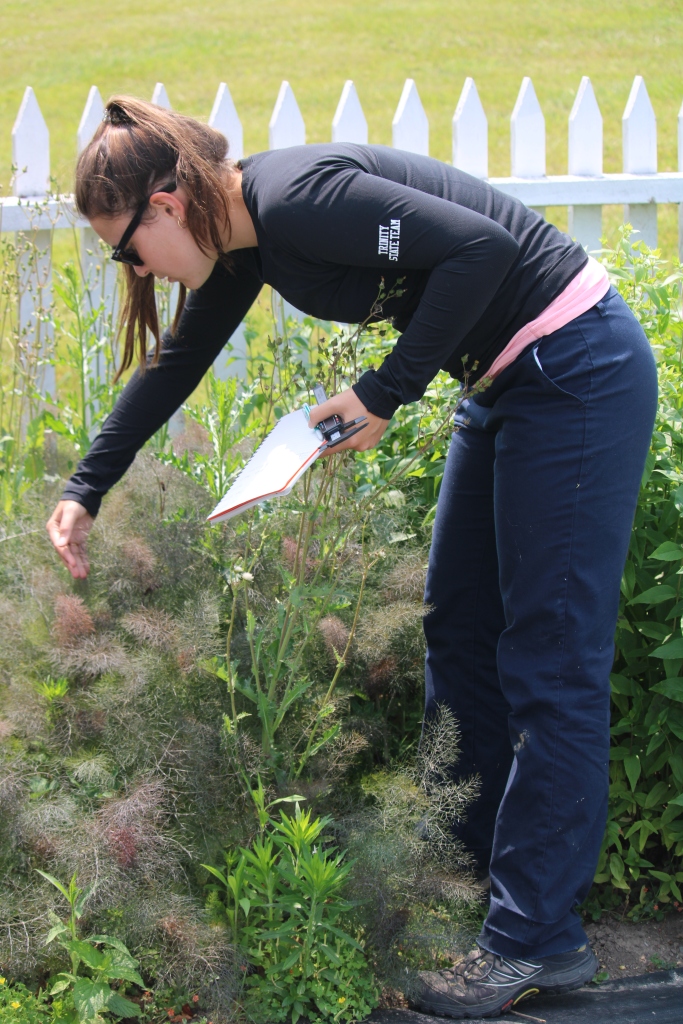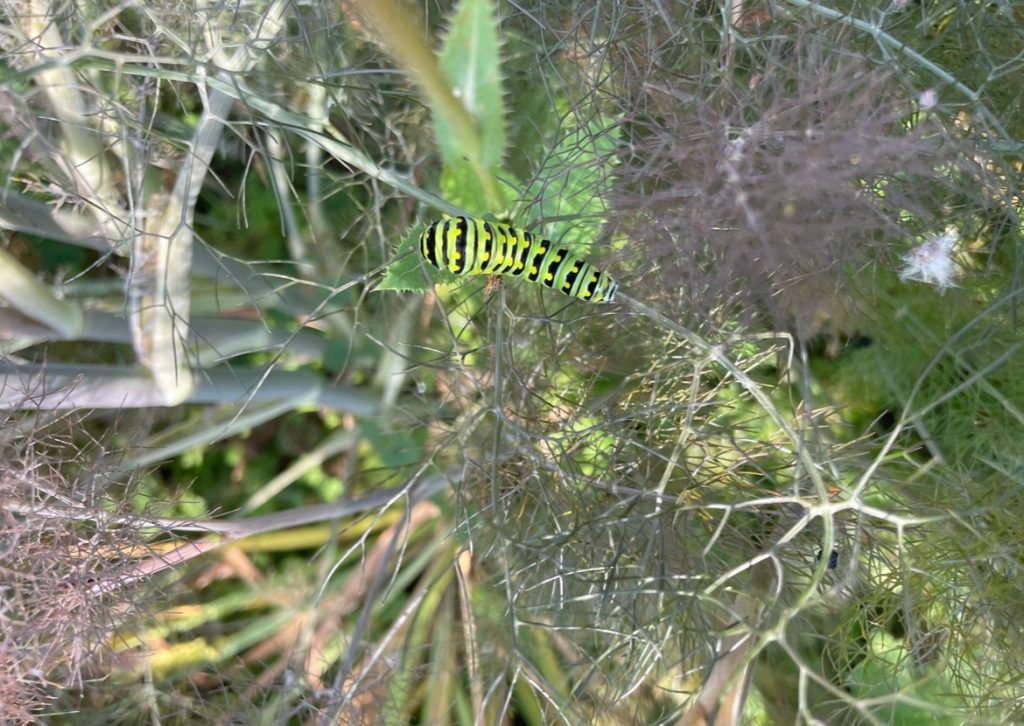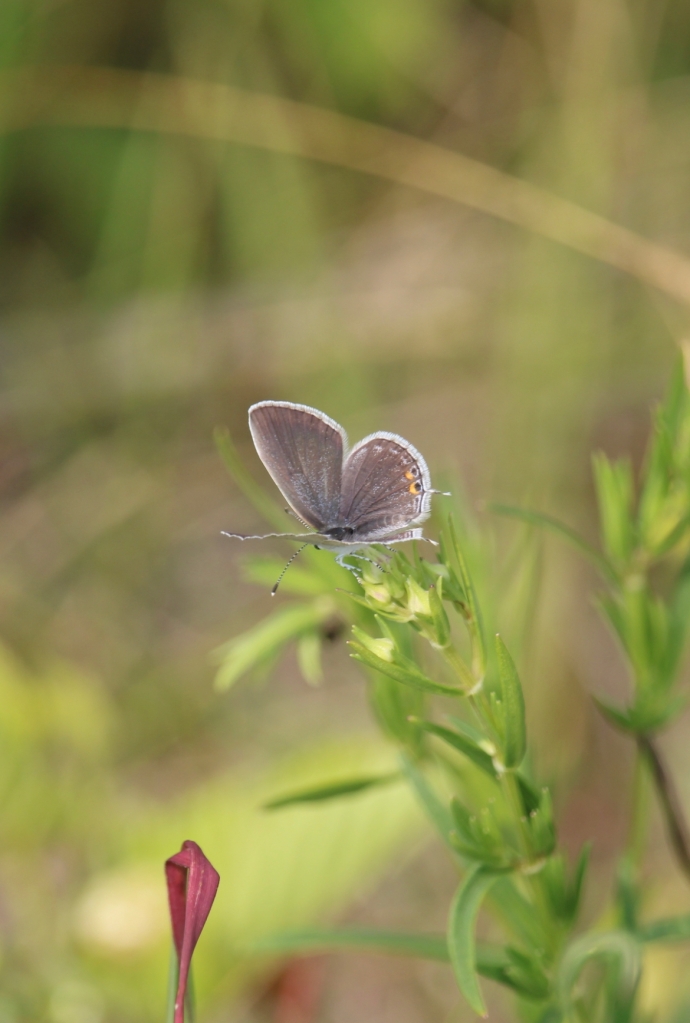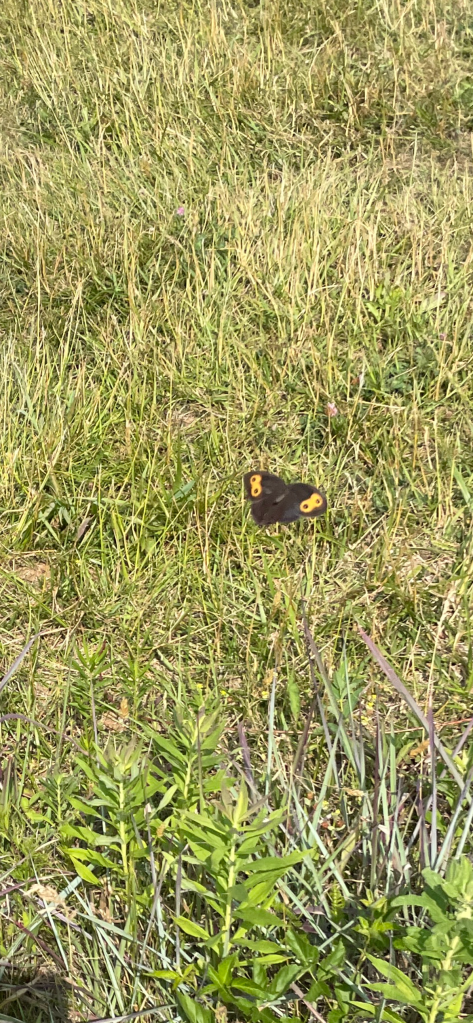Hi guys! Welcome to the Ferster Lab, where my people get to study the diversity of the butterflies in Gettysburg, PA! It’s a pretty awesome lab, where lots of butterflies are spotted, plants are counted, and flowers are planted. Keep reading to see some beautiful pictures of butterflies!

But before we get to that, I want to introduce you to the Butterfly Band, the four of us who make up the Ferster lab. First off, there is me, Christopher Robin, but I often go by Chrissy. Dr. Ferster is my human. I love to wander around the greenhouse, but my most favorite activity is chewing on the garden clippers. My labmates often have to take them away from me, which is so unfair because they get to use them and I don’t. Sometimes I get a little scared of the gardening equipment and I have to be left behind on the survey days because I might scare away the butterflies.

Next, we have Dr. Ferster, our fearless leader. An ant lover at heart, she expanded to also study butterflies about 20 years ago, supposedly. I’m only 2, so this is all just what I have been told. When not thinking about butterflies, Dr. Ferster can be found snuggling with her favorite dog (me!), browsing the aisles of the local nursery (Ashcombes!), or baking her students yummy treats such as sourdough (Bramley’s favorite) and carrot cake (Gabe’s favorite).

That brings us to Gabe, the botanist of the group. Gabe is a rising senior who loves all things plants. A Biology and Environmental Studies double major, Gabe likes to spend his free time climbing and trying out new recipes! His favorite meal he cooked this summer was vegetarian tacos.

Lastly, there is Bramley, the designated butterfly counter in the group. A rising sophomore Environmental Studies major with Biology and Data Science minors, Bramley can often be found swimming in the pool or testing out the local creameries. Contrary to popular opinion, she thinks Half Pint Creamery is superior to Mr. G’s. Her favorite flavor is the lemon blueberry swirl from Half Pint.

So what are my humans actually doing? Well, they are studying how flowering plant diversity affects the diversity and abundance of butterfly species. Flowering plant diversity is closely tied to butterfly diversity and abundance. Basically, this means they are looking at the plants present in Gettysburg that butterflies use as larval hosts, nectar sources, and refugia to hide in during their life stages.
Nectar plant and butterfly diversity study:
Once a week, on days meeting specific conditions (>75 F, <50% cloud cover, <10mph wind speed), the lab goes out to 6 sites around the Gettysburg area. Bramley walks through the sites first, looking low for the small skippers who sit in the grass and high for the swallowtails swooping through the air, as well as everywhere in between. She records each species in her notebook and also (tries) to take a picture of each in order to get verification for the field identification. They move fast, though! These pictures are then uploaded to the citizen science database, iNaturalist.com. Gabe and Dr. Ferster follow behind Bramley to identify the flowering plants. There are set paths that the lab follows through the field sites each week in order to maintain consistency. The flowering plants are then compared to the species of butterflies that have been spotted to compare how the diversity of flowering plants affects the diversity of the butterflies that they see each week in six different sites.
They are comparing the diversity of this year to the three previous years that this lab has been collecting data. Due to the cold spring that we’ve had, they were seeing fewer flowering plants and butterflies than they typically would have seen at this time. In order to accurately compare the data they standardize our diversity data using growing degree days. Originally used for predicting corn harvest times, degree days are a measure of heat accumulation. They use the cumulative degree days in order to compare one year to the other.
Over the last three years, we have found low diversity and abundance across all of our sites. The main butterflies we have observed have been grass-eating skippers and long-distance migratory butterflies. We are now trying to figure out why. We are counting the nectar plants and looking at larval host plant density to determine if a lack of resources is causing the decline in diversity and abundance.
Larval Host Plants:
We have also recently added a new part to the project. Fritillary butterflies are now rare. In the four years that this lab has been studying butterflies, only five fritillaries have ever been seen. I have never seen one as I get left at home, but everyone else has seen one. Part of the problem may be that the habitat is not suitable for fritillaries. Fritillaries need violets for caterpillars, nectar plants for adult food, and bunch grasses to use as protection for overwintering and summer diapause. They believe that one of these plant resources may be the limiting factor explaining the fritillary decline. To determine violet density they are taking a 2m x 2m PVC pipe square and dropping it on coordinates randomly generated by GIS in the New Jersey Brigade and Wheatfield field sites. Within that plot, they will count the number of violets and estimate the bunchgrass cover in order to determine if fritillaries in the Gettysburg National Military Park have declined due to a lack of these resources.

Because fritillaries only use violets (Viola spp.) as larval host plants, they might be more vulnerable to changing plant populations than other butterflies. Other species, such as the black swallowtail, eat a variety of plants within the same family (Apiaceae). Because they eat a wider variety of plants, including some non-native weeds and garden plants, black swallowtails might be more resistant to changes in plant diversity. My humans search plants for black swallowtail caterpillars weekly to see if they can determine a host preference.

We also have our very own pollinator garden! Located behind the observatory, this is a place where they are wondering, “If they build it, will they (the butterflies) come?” They spend a lot of time maintaining this garden and looking for native butterfly plants to plant! We have numerous types of milkweed, Zizia auria, blue vervain, and so much more! At the moment, we have built a garden on campus, but the butterflies have not yet come en mass. This is likely due to the cold spring, so hopefully in the next few weeks, they will start coming! Also in our pollinator garden, they are conducting a feeding survey for black swallowtail and monarch caterpillars. We have dill, parsley, native Zizia, and green and bronze fennel all located near each other in the garden for black swallowtails. And an assortment of milkweeds for monarchs. Some of these plants are native, and others are not native, but the black swallowtail caterpillar will still munch on them, so they are trying to see which is the preferred food type when all are available.

You can help us collect data! If you see a butterfly in Gettysburg you can upload photos to iNaturalist.com. Happy butterfly-ing!









